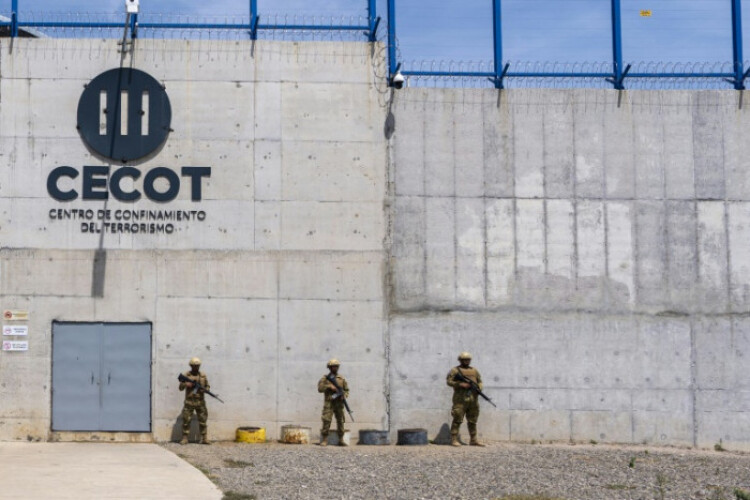
KATHMANDU – The management and rehabilitation of captive wildlife in the Sudurpaschim province has become a major challenge due to a shortage of rescue centres.
Royal Bengal tigers, an endangered species, are found in some national parks and forests in the Tarai region of Nepal. According to the latest tiger census conducted in 2021, the tiger population in Nepal has risen to 355, with the country nearly tripling the number in 12 years.
While this increase in the tiger population has positive indications for wildlife conservation, it has also led to increased human-tiger conflicts and created challenges in rehabilitating captive tigers.
On Saturday morning, residents of Teduwa in ward 2 of Belauri Municipality in Kanchanpur district, were alarmed when a fully grown tiger was spotted in a nearby wheat field. Security personnel, forest officials, and teams from the Shuklaphanta National Park and Shuklaphanta Conservation Programme of the National Trust for Nature Conservation (NTNC) were mobilised to capture the animal.
Despite a day-long effort, the tiger could not be darted on Saturday. However, on Sunday afternoon, with the help of two elephants, officials successfully tranquilised and captured it. The tiger was then placed in an iron cage and transported to the Division Forest Office in Mahendranagar, headquarters of Kanchanpur district, in the evening. But officials are facing difficulties in managing and rehabilitating the rescued tiger.
The rescued male tiger was released into its natural habitat at Shuklaphanta National Park on Monday night. “We face difficulties housing rescued wildlife due to the lack of a dedicated rescue centre. We kept the tiger at our office for two days but couldn’t find space in any rescue centres or the zoo. Following discussions with stakeholders the tiger was released in the core area of the national park,” said Ram Bichari Thakur, chief of the Division Forest Office in Kanchanpur. He hoped that the tiger would not stray into the settlement again, as it had not attacked any people.
The absence of a rescue centre and delays in making decisions have complicated the management of rescued wildlife. In Sudurpaschim province, officials must rescue one or two leopards every few months, and tigers have been captured annually for the past three years. However, without a dedicated facility, authorities struggle to determine where to relocate them.
Last July, a tiger that killed a woman in Dodhara Chandani Municipality in Kanchanpur district, was sent to the rescue centre at Bardiya National Park after being captured with the tireless efforts of two days. Similarly, a tiger that attacked a woman in Belauri Municipality two years ago was relocated to the Central Zoo in Lalitpur.
“We continue to face difficulties in managing rescued wildlife due to the lack of a rescue centre,” said Purushottam Wagle, conservation Officer at Shuklaphanta National Park. “Rescuing problem wildlife is just part of the challenge—finding a long-term solution for their care and management is even more difficult,” said Wagle.
The adult male tiger captured on Sunday appeared weak but had no visible injuries. According to Dr Abhash Shrestha, a veterinarian at the park, the rescued tiger was likely weakened by hunger. He suggested that the tiger may have ventured out of its territory after losing a fight or failing to find food.
A rescue centre is currently under construction at Shuklaphanta National Park to house rescued wildlife. Laxmiraj Joshi, chief of the Shuklaphanta Conservation Programme of the NTNC, pointed out that merely building physical infrastructure is not enough. “Managing wildlife requires significant resources, including funding for food and medical care, as well as trained personnel,” he said.
Joshi emphasised the urgent need for a dedicated rescue centre in Sudurpashchim province where leopards and tigers frequently enter human settlements or get caught in traps. The NTNC continues to lead rescue efforts for wild animals across the province’s nine districts.
With increasing human-wildlife conflict, the authorities have a tough time controlling, rescuing, and managing wild animals. The rehabilitation of tigers, which are aggressive by nature, is especially difficult.
Almost all enclosures across the nation are full of captive tigers. Chitwan National Park, the country’s first national park which is home to 128 tigers, has altogether six cages—four in Kasara and two in Sauraha. The Bardiya National Park, which is home to 125 tigers, has cages that can accommodate up to five captive tigers, Parsa National Park has two such cages while Banke National Park has one.
According to conservationists, all captive tigers currently in cages in various parks are troublesome and cannot be released into the wild. They argue that if these captive tigers are released, they would return to human settlements and cause trouble. So, many more wildlife rescue centres should be set up across the country to house captive tigers, say conservationists.
Asia News Network/The Kathmandu Post
Royal Bengal tigers, an endangered species, are found in some national parks and forests in the Tarai region of Nepal. According to the latest tiger census conducted in 2021, the tiger population in Nepal has risen to 355, with the country nearly tripling the number in 12 years.
While this increase in the tiger population has positive indications for wildlife conservation, it has also led to increased human-tiger conflicts and created challenges in rehabilitating captive tigers.
On Saturday morning, residents of Teduwa in ward 2 of Belauri Municipality in Kanchanpur district, were alarmed when a fully grown tiger was spotted in a nearby wheat field. Security personnel, forest officials, and teams from the Shuklaphanta National Park and Shuklaphanta Conservation Programme of the National Trust for Nature Conservation (NTNC) were mobilised to capture the animal.
Despite a day-long effort, the tiger could not be darted on Saturday. However, on Sunday afternoon, with the help of two elephants, officials successfully tranquilised and captured it. The tiger was then placed in an iron cage and transported to the Division Forest Office in Mahendranagar, headquarters of Kanchanpur district, in the evening. But officials are facing difficulties in managing and rehabilitating the rescued tiger.
The rescued male tiger was released into its natural habitat at Shuklaphanta National Park on Monday night. “We face difficulties housing rescued wildlife due to the lack of a dedicated rescue centre. We kept the tiger at our office for two days but couldn’t find space in any rescue centres or the zoo. Following discussions with stakeholders the tiger was released in the core area of the national park,” said Ram Bichari Thakur, chief of the Division Forest Office in Kanchanpur. He hoped that the tiger would not stray into the settlement again, as it had not attacked any people.
The absence of a rescue centre and delays in making decisions have complicated the management of rescued wildlife. In Sudurpaschim province, officials must rescue one or two leopards every few months, and tigers have been captured annually for the past three years. However, without a dedicated facility, authorities struggle to determine where to relocate them.
Last July, a tiger that killed a woman in Dodhara Chandani Municipality in Kanchanpur district, was sent to the rescue centre at Bardiya National Park after being captured with the tireless efforts of two days. Similarly, a tiger that attacked a woman in Belauri Municipality two years ago was relocated to the Central Zoo in Lalitpur.
“We continue to face difficulties in managing rescued wildlife due to the lack of a rescue centre,” said Purushottam Wagle, conservation Officer at Shuklaphanta National Park. “Rescuing problem wildlife is just part of the challenge—finding a long-term solution for their care and management is even more difficult,” said Wagle.
The adult male tiger captured on Sunday appeared weak but had no visible injuries. According to Dr Abhash Shrestha, a veterinarian at the park, the rescued tiger was likely weakened by hunger. He suggested that the tiger may have ventured out of its territory after losing a fight or failing to find food.
A rescue centre is currently under construction at Shuklaphanta National Park to house rescued wildlife. Laxmiraj Joshi, chief of the Shuklaphanta Conservation Programme of the NTNC, pointed out that merely building physical infrastructure is not enough. “Managing wildlife requires significant resources, including funding for food and medical care, as well as trained personnel,” he said.
Joshi emphasised the urgent need for a dedicated rescue centre in Sudurpashchim province where leopards and tigers frequently enter human settlements or get caught in traps. The NTNC continues to lead rescue efforts for wild animals across the province’s nine districts.
With increasing human-wildlife conflict, the authorities have a tough time controlling, rescuing, and managing wild animals. The rehabilitation of tigers, which are aggressive by nature, is especially difficult.
Almost all enclosures across the nation are full of captive tigers. Chitwan National Park, the country’s first national park which is home to 128 tigers, has altogether six cages—four in Kasara and two in Sauraha. The Bardiya National Park, which is home to 125 tigers, has cages that can accommodate up to five captive tigers, Parsa National Park has two such cages while Banke National Park has one.
According to conservationists, all captive tigers currently in cages in various parks are troublesome and cannot be released into the wild. They argue that if these captive tigers are released, they would return to human settlements and cause trouble. So, many more wildlife rescue centres should be set up across the country to house captive tigers, say conservationists.
Asia News Network/The Kathmandu Post






